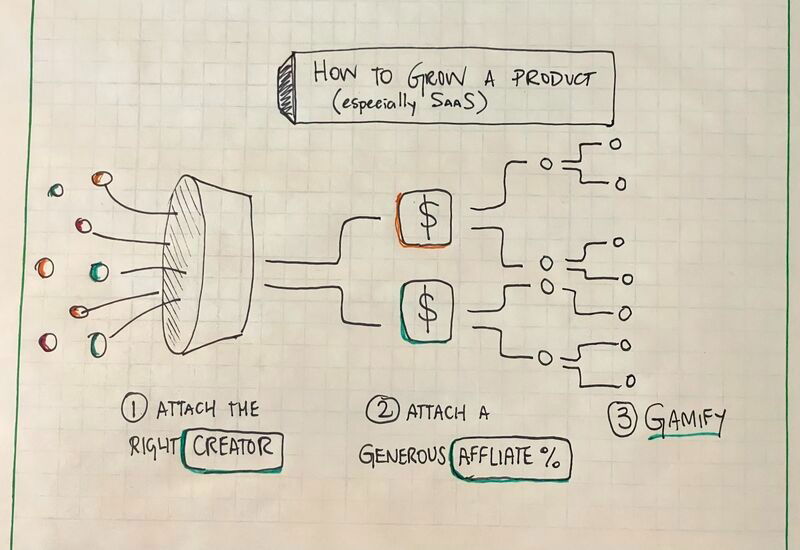How Greg Isenberg would make a sass out of AI.
Updated on

This sketch from Rick Isenberg nails how to grow a SaaS without ads or a big team. Simple framework: creators + affiliates + gamification. It’s a distribution flywheel disguised as a pencil drawing.
The Core Framework
Attach the right creator
Find people your target audience already trusts. Not just big names — smaller creators (5k–70k followers) often convert better.Attach a generous affiliate %
Be bold with revenue share (even 30–50%). Trade early profits for momentum and word-of-mouth.Gamify everything
Add leaderboards, badges, and rewards. Turn customers and affiliates into players chasing progress.
Why It Works
- Taps into built-in trust networks
- Trades margin for distribution power
- Uses incentives that drive consistent action
- Turns growth into a viral, self-sustaining loop
Real-World Examples
- Notion grew through power users sharing templates
- Beehiiv’s affiliate program pays 50% recurring commissions
- Duolingo built habit loops with streaks
- Gumroad empowered mid-tier creators early on
- Tinder grew through college ambassador "competitions"
Analyzed by Swipebot
Loading analysis...